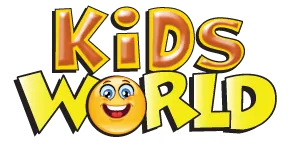Learn English » English Literature » Poem 'Two Deaths' by Elizabeth Jennings
Two Deaths
It was only a film,
Perhaps I shall say later
Forgetting the story, left only
With bright images- the blazing dawn
Over the European ravaged plain,
And a white unsaddled horse, the only calm
Living creature. Will only such pictures remain?
Or shall I see
The shot boy, running running
Clutching the white sheet on the washing line,
Looking at his own blood like a child
Who never saw blood before, and feels defiled,
A boy dying without dignity
Yet brave still, trying to stop himself from falling
And screaming- his white girl waiting just out of calling?
I am ashamed not to have seen anyone dead
Anyone I know, I mean;
Odd that yesterday also
I saw a broken cat stretched on a path
Not quite finished. Its gentle head
Showed one eye staring, mutely beseeching
Death, it seemed. All day
I have thought of death, of violence and death,
Of the blazing Polish light, of the cat’s eye:
I am ashamed I have never seen anyone die
Analysis
The poem ‘Two Deaths’, as the name implies, speaks of two deaths that the poet experienced: one in a film, and the other in real life.
Summary
In the first stanza, the poet talks about a death that she watched as part of a movie. It was “only a film”, she says. But the sequence of scenes portraying the death of a boy onscreen had a profound effect on her. It is only the “bright images” of the movie that she remembers now. The images revealed a war-torn countryside, and a horse without the rider: European ravaged plain. And a white unsaddled horse; the horse being the only living thing in the scene. This much is only the image, about which she may talk about without emotion.
In the second stanza, however, the poet talks about another way of looking at the movie scenes; in a more involved and empathic manner. She can choose to see the “shot boy, running running”, a boy who looks at “his own blood like a child”, a boy who feels “defiled” and is “dying without dignity”. He is scared by is trying to be brave, and trying to stop himself from falling and screaming for his lady love who is waiting for him.
In the final stanza, the poet is feeling what she calls escaper’s guilt, or the guilt of having lived a life cocooned from the life she has just witnessed: that involves death and pain. However, she was able to watch a cat die: “a broken cat stretched on a path”. This made the poet think of death and violence, since the cat had been evidently run over by a vehicle. The last line is a repetition of the sentiment expressed earlier: the shame that the poet feels for having lived a sequestered life, away from the miseries of life.
Language and imagery
The poem is irregular in rhyme, quite filling with the chaotic nature of its theme: violence and death. The language of the poem is rather harsh and the imagery is evocative of violence and death. Words such as ‘blood’, ‘defiled’, ‘blazing’, ‘dying’, ‘finished’ and ‘beseeching’ are fitting with the theme of the poem.
Was this article useful? What should we do to improve your experience? Share your valued feedback and suggestions!
Help us to serve you better. Donate Now!

